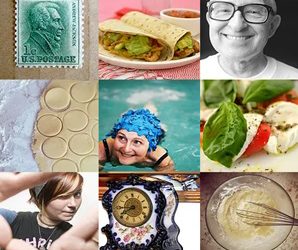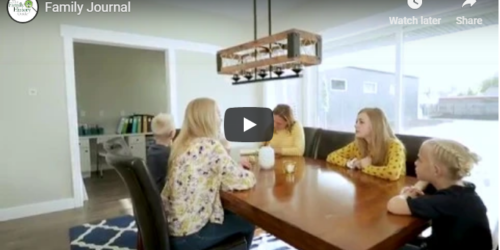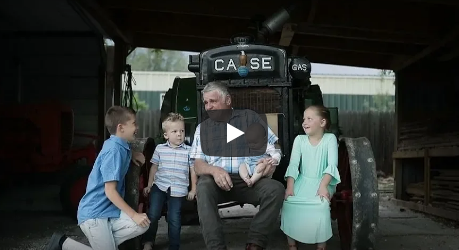The Power of Family Recipes
It may be making mom’s potato salad (though it never tastes quite as yummy) or mixing up grandpa’s famous peanut butter fudge that spurs childhood memories and turns an ordinary moment into a bonding one. Cooking recipes from our heritage can bring a sense of togetherness that spans generations by strengthening ties with the living and the dead. Family recipes are a way of keeping our loved ones alive while we dice, stir, simmer and bake! Food appeals to all five of our senses. For some of us, just the smell of a favorite family dish cooking on the stove can transport us back to the kitchen of our youth, and we can almost taste the anticipation again of gathering for a family meal without a single empty chair. Preserving and using family recipes can open the door to sweet emotions from the past that are accessible anytime. Baking with family recipes can make any occasion into a magical family history moment!
In an article entitled The Power And importance of Family Recipes, Kate Walling writes:
As a child, I remember waking up early to the smell of my grandmother’s cooking. She would rise at 6 or 7 AM to begin preparing a meal for the family. As usual, this meal would be special. She would know each of our favorite dishes and find the time to make all of them while offering breakfast to the grandchildren, who spent the night frequently. For many people, food and family are intimately connected. Modern families have a difficult task when it comes to preserving this connection. How is it possible to make a meal from scratch when you have to work, pick up the kids, clean the house, do the grocery shopping, and carry on relationships with friends and loved ones? We may not be able to do the exact same things in the kitchen that our grandmothers did twenty or thirty years ago, but there are new, innovative ways for both men and women to honor family traditions and preserve the culinary knowledge that has been handed down for generations.
She categorizes these ways as The Emotional Experience of Food, The Legacy of Food, and The Heritage of Food. She advises documenting family recipes and quotes Laurie Colwin who writes, “No one who cooks, cooks alone. Even at her most solitary, a cook in the kitchen is surrounded by generations of cooks past, the advice, and menus of cooks present, the wisdom of cookbook writers.” Kate summarizes her article with these words:
As we record the thoughts, ideas, and processes of our traditional family meals we create an heirloom that will be handed down to our children, grandchildren and great-grandchildren. We build a bridge by which our loved ones can learn about who we are, even after we are gone from this world. Part of knowing the path ahead is to understand where you come from. This legacy of food passed down from one generation to another is a tool, a family tree of foods, a line that can be traced for decades into the past and the future.
Food is a universal need, eating is something all human beings do. Because of this, meals have been a symbol throughout the ages of sharing, nurturing and loving one another. Remembering, collecting, recording and passing down the recipes your loved ones have passed to you is a wonderful way to honor and immortalize your family. These traditions from the past are part of who you are as an individual. Not only will these recipes allow you to create meals that are a meaningful experience, but they will also inspire you to create your own versions of dishes, to add your own flavor and style. You will take what your family has given to you and infuse it with your own meaning and power. Family ties are bonds that stand the test of time. Preserving family recipes is saving and honoring our heritage so future generations can continue to strengthen those ties.
The Family History Guide Activities pages have some fun ideas for making the most of family recipes:
Y2-08 Tasty Treats: Entertain your family by serving some tempting dishes that your ancestral family might have eaten, such as Danish dumplings, lasagna, sauerkraut, sushi, lox and bagels, johnnycakes, smoked dried jerky, or French pastry. What items were on your ancestors’ menu?
Y3-11 Make a Documentary about a Family Tradition
Y3-13 Have a Home Movie Night This blog post has even more insights and links to help you create family videos. However you decide to preserve your family recipes, stories, and memories, the important thing is to do it!
F1-09: Create, Share, and Record Family Recipes See Share Your Family’s Food Story, the Family History Recipe Book Idea, and this article.
See this blog post Family history recipe bake-off—
With your family or with a group, plan an event where family recipes will be used to create delectable dishes. Taste-testing and awards will make for a fun evening, with a lot of family history stories shared. Perhaps some family heirloom cookbooks will get their start from this fun activity! Check out these ideas for recipe sharing activities on FamilySearch.
Enjoy!






This is a great (and yummy) way to get involved in family history – thanks for this well-written article!